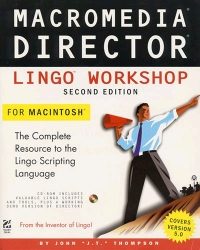From the FunkyKB Archives: Russell de Pina
 Back in the day, Russell de Pina of n2active.com was the force behind Electronic Urban Report an email newsletter. This Blog post means to preserve his message from February 24, 2000:
Back in the day, Russell de Pina of n2active.com was the force behind Electronic Urban Report an email newsletter. This Blog post means to preserve his message from February 24, 2000:
TECHNOLOGY BREAKDOWN—Russell de Pina
The New Builders
Here we are at the end of another Black History Month, so before the contributions of African Americans are put on the back burner for another year, I’d like to give some shout-outs to folks that you probably never heard of. Their contributions have made possible much of the new media/digital revolution permeating our consciousness more and more each day.
Dr. Mark Hannah not only was one of the cofounders of Silicon Graphics Inc., but he holds the patents for the graphic engine technology that made Silicon Graphics the gold standard of computer graphics machines. SGI machines have been used for everything from molecular modeling to creating the special effects in “Terminator 2.” That’s right director James Cameron, you owe the success of “T2” to a brother!
J.W. Thompson created a language called “Lingo” for Macromedia. How significant is that you ask? Well, every time you buy a multimedia CD-ROM title, the chances are that the people who authored that CD used “Lingo” to produce it. Every time you see a cool Flash movie on a website, you are looking at technology that originated from Mr. Thompson’s idea that multimedia could be scripted like a program. Despite the long reach of his work, magazines like Wired have never acknowledged the contribution of this member of the black digerati.
To quote Sun Microsystems, “the network IS the computer.” A chip produced by Advanced Micro Devices called the LANCE (Local Area Network Controller for Ethernet) was the power behind Sun’s network. Vern Coleman led the product development team at AMD that I worked on to create the LANCE chip in 1982. While other network chips came out during that time, the LANCE was designed into more systems than any competing designs. In the January issue of Wired magazine, there is an article about work being done at UC Berkeley on configurable interfaces for distributed computing elements. The LANCE sported a configurable interface design 18 years before Wired deemed the technology “new.”
We all know it was really the labor of African Americans that “built” the America of old. What you may not know is that we’re helping to build the world of the future as well.
Russell de Pina invented the ABEL programming language for programmable logic design. ABEL made it possible for ASIC companies like Xilinx, Altera, Atmel and others to come into existence. Russell can be reached via email at rdepina@designgroup-studio.co.
It does not go unnoticed by this reader that the Wikipedia.org information about ABEL does not appear to be related to Russell de Pina. Also Dr. Mark Hannah is not referenced there either. Is ABEL a name used for more than one programming language? Where are these people?
It is too simplistic to accuse some evil whites out there for undermining the achievements of these people with strong African features. Experience shows me time and again that many of these African-descended talents find it rude or distasteful (or simply out of context) to remind the world of their African heritage. So in order to be viewed as “level-headed,” “rational” or “reasonable”—or a nice/cool guy—these people stay silent. Many are paid huge sums of money to stay silent and hidden. These people see it as a small price to pay to avoid playing hacky sack alone…
The main goal is to present a “positive outlook” to boost shareholder confidence. Many business leaders interpret this to mean that white males at the helm and in the lead make shareholders of all colors more “comfortable” about their investment. This statement appears in spite of existence of the colored man running Symantec or the other colored guy running Oracle.
But dig: The inventor of Lingo, J.W. Thompson, is online now!

Comments
Steven Sidman, 2009-10-26 03:03:13
Interesting. I was looking up some old AMD associates and the search for Vern Coleman yielded this site. The LANCE development was a bit more complex than the story here. DEC and Xerox had the system knowledge (and the patents and the market need), while AMD and Mostek competed as their designated chip suppliers. AMD kept banging away on the design rather more successfully than Mostek, with frequent fab runs to incorporate design changes and almost weekly phone conferences with DEC to review system test results until all the bugs were fixed. I do recall Vern and his massive hardware chip simulators (maybe a dozen boards or more, as I recall) in the back lab on the second floor of the old 444 DeGuigne building.
LANCE was essentially a done deal by the time I got to AMD in 1983. What I remember Vern for mostly is the development of the successor high speed network standard at the time, FDDI (Fiber Distributed Data Interface), a ring (or even double ring, for redundancy and fault tolerance) oriented network topology that ran at 125MHz. Besides the FDDI parts themselves, a lot of that technology found its way into other networking and interface parts. The TAXI (Transparent Asynchronous Transceiver Interface) used what was essentially FDDI data encoding.
Russ DePina is another name from the AMD past. He was in Warren Miller's programmable logic group, along with Jenny Yee and the Kitson brothers. My recollection is that Russ worked mainly with gate arrays. 1983 was still early days yet for bringing design automation to logic design, and Russ was an important part of the effort to get designers to design logic logically.
Memories from over a quarter-century ago...